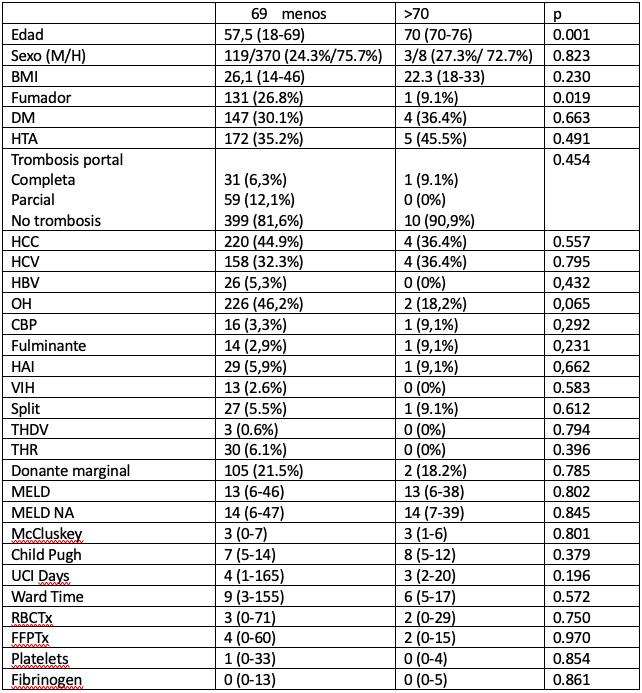Comparative study between liver transplant recipients older and younger than 70 years. A call for caution
Alba Gómez Barrena1, Iago Justo Alonso1, Alberto Marcacuzco Quinto1, Oscar Caso Maestro1, Félix Cambra Molero1, Álvaro García-Sesma Perez-Fuentes1, Alejandro Manrique Municio1, Jorge Calvo Pulido1, Manuel Abradelo de Usera1, Carmelo Loinaz Segurola1.
1University Hospital 12 de Octubre, Madrid, Spain
Introduction: The existing controversy regarding the influence of the advanced age of the recipient on the outcomes of liver transplantation is exacerbated by the disproportion between the number of recipients and donors, leading to the obligation to distribute organs among potential recipients, prioritizing according to the needs of the patient and the cost-effectiveness, measured in terms of survival and quality of life.
Materials and Methods: From January 1, 2014, to August 31, 2023, we performed 523 liver transplants. We selected a sample of 500 patients with follow-up until March 3, 2024, considering recipients older than 70 years (11 patients) and the remaining patients aged 69 years or less (489 patients). Pediatric recipients and those with multi-visceral transplants were excluded.

Results: Preoperative prognostic scales are significantly more favorable in the older age group. Younger recipients have presented fewer comorbidities, but smoking habits have been significantly more frequent. We found no significant differences in etiology between the groups. The percentage of smokers was 131 (27.4% in <70 years) vs. 1 (9.1% >70 years), p=0.019. Portal thrombosis rates were similar between the groups. Donor characteristics were similar in both groups. Recipients older than 70 years had a higher mortality rate due to a higher incidence of early post-transplant complications. Actuarial survival of older recipients was statistically inferior to that of those under 70 years, at 1.3 and 5 years: 89.3%, 84.8%, and 82.5% in <70 years vs. 72.7%, 48.5%, and 48.5% in <70 years (p=0.008). Causes of mortality are similar but earlier and more frequent in the older age group, with the recipient's age being statistically significant in multivariate analysis.
Conclusion: An actuarial survival of 48.5% raises questions about the indication for recipients over 70 years of age. The indication for such recipients should be carefully selected.
